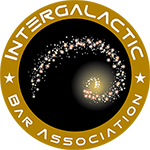France’s space launch industry received a needed endorsement on September 14, 2017, when the European Space Agency (ESA) became the first customer to contract with Arianespace SAS for launch services using its next generation Ariane 6 rocket. ESA contracted for two Ariane 6 rocket launches, with each to carry two European Union (EU) Galileo satellites.
The missions are both contracted to use the Ariane 62 launcher, a lighter version of the standard Ariane 6 rocket equipped with two strap-on solid-fuel side-boosters. They are scheduled to launch from the Guiana Space Centre in French Guiana in late-2020 and mid-2021. To date, ESA has invested more than two billion Euros (€) to improve and develop the ground facilities at Guiana Space Centre. ESA owns the special infrastructure built for the Ariane, Soyuz and Vega launchers at “Europe’s Spaceport,” including launcher and satellite preparation buildings, launch operation facilities and a plant for making solid propellant and integrating solid rocket motors.
ArianeGroup, formerly Airbus Safran Launchers, is building the Ariane 6 rocket with oversight by ESA and it should be noted that the first-ever demonstration flight of the Ariane 6 is currently scheduled for July 16, 2020.If the project is delayed for any amount of time, the launch will probably take place using an older proven launch technology.In fact, the ESA’s launch contract provides that the Russian Soyuz launcher can be used instead of the Ariane 6 in case of a significant project delay, but that the decision is to be made by the end of 2018.
Arianespace has launched 14 of the 18 Galileo satellites currently in orbit using Soyuz rockets, with an Ariane 5 ES launching the most recent four Galileo satellites on a single mission in November 2016. Two more Ariane 5 ES missions are planned on December 12, 2017 and in the summer of 2018. If the Ariane 6 will not be ready in time for the new ESA contract launches, the Soyuz is the preferred back-up technology due to its proven use carrying Galileo satellites into orbit two-at-a-time.
Arianespace has carried out nine launches from the Guiana Space Center to date in 2017 (five by Ariane 5, two by Soyuz and two by Vega). Since the beginning of the year, Arianespace has launched 15 payloads – including 12 into geostationary transfer orbit – totaling 55,440 kg. Arianespace’s Ariane 5 rocket is expected to remain viable through at least 2021, particularly for heavy payloads, and Arianespace continues to receive launch contracts from its customers for the Arian 5. The Arian 5 rocket set its launch payload record of 9,969 kg in June 2017.
The Ariane 6 rocket represents the ESA’s best effort to develop rocket technologies to compete with the great advancements currently being achieved by US private companies, such as SpaceX and Blue Origin. Stéphane Israël, the 46-year old Chief Executive Officer of Arianespace is the driving force behind the company’s continued success in launching satellites. Headquartered in Evry, France, Arianespace has successfully launched more than 550 satellites into orbit since its founding in 1980.
Speaking of the latest ESA contract to use Arianespace’s new launcher, Mr. Israël said
Arianespace is especially proud to have won this first launch contract for the Ariane 6 from its loyal customers and partners, the European Commission (DG Growth) and ESA. We are very pleased to have earned this expression of trust from the European Commission; by choosing to continue the deployment of the Galileo constellation with two Ariane 62 launches, they become the first confirmed customer for our next-generation heavy launcher, which is slated to make its initial flight in the summer of 2020. Through this decision, which adds two additional launches to follow the already-scheduled Ariane 5 ES flights, the European Commission and ESA are clearly indicating a key commitment to Arianespace’s next generation of launchers, which reaffirms more than ever its mission to ensure Europe’s autonomous access to space.
Under development, Ariane 6 is Europe’s newest launcher, designed to extend guaranteed access to space for Europe at a competitive price. ESA’s Director of Space Transportation Daniel Neuenschwander remarked “This contract is a key step in the upcoming ramp-up phase of Ariane 6.” The next generation launcher is planned to operate in two configurations, depending on customer needs. The Ariane 62 will be fitted with two strap-on boosters and the Ariane 64 will have four strap-on boosters. ESA’s Director of Space Transportation Daniel Neuenschwander remarked “This contract is a key step in the upcoming ramp-up phase of Ariane 6.”
Galileo is Europe’s own GPS system under “civilian control” and is intended to eventually consist of more than 26 Galileo satellites. The European Union owns Galileo, which will be interoperable with GPS and Glonass, the US and Russian global satellite navigation systems. Galileo is the first joint infrastructure financed by the European Union. The system incorporates innovative technologies developed in Europe “for the greater benefit of citizens worldwide.” Each Galileo satellite weighs about 750-kilograms and is intended to operate in a 23,000-kilometer medium-Earth orbit. To-date they have either been launched in pairs by a Soyuz launcher or in fours by an Ariane 5 launcher.
The launch contract with Arianespace was signed by ESA’s Director of the Galileo Programme and Navigation-related Activities, Paul Verhoef and by Arianespace’s CEO, Stéphane Israël. ESA signed the contract on behalf of the EU represented by the European Commission. The Commission and ESA have a delegation agreement by which ESA acts as design and procurement agent on behalf of the Commission.
